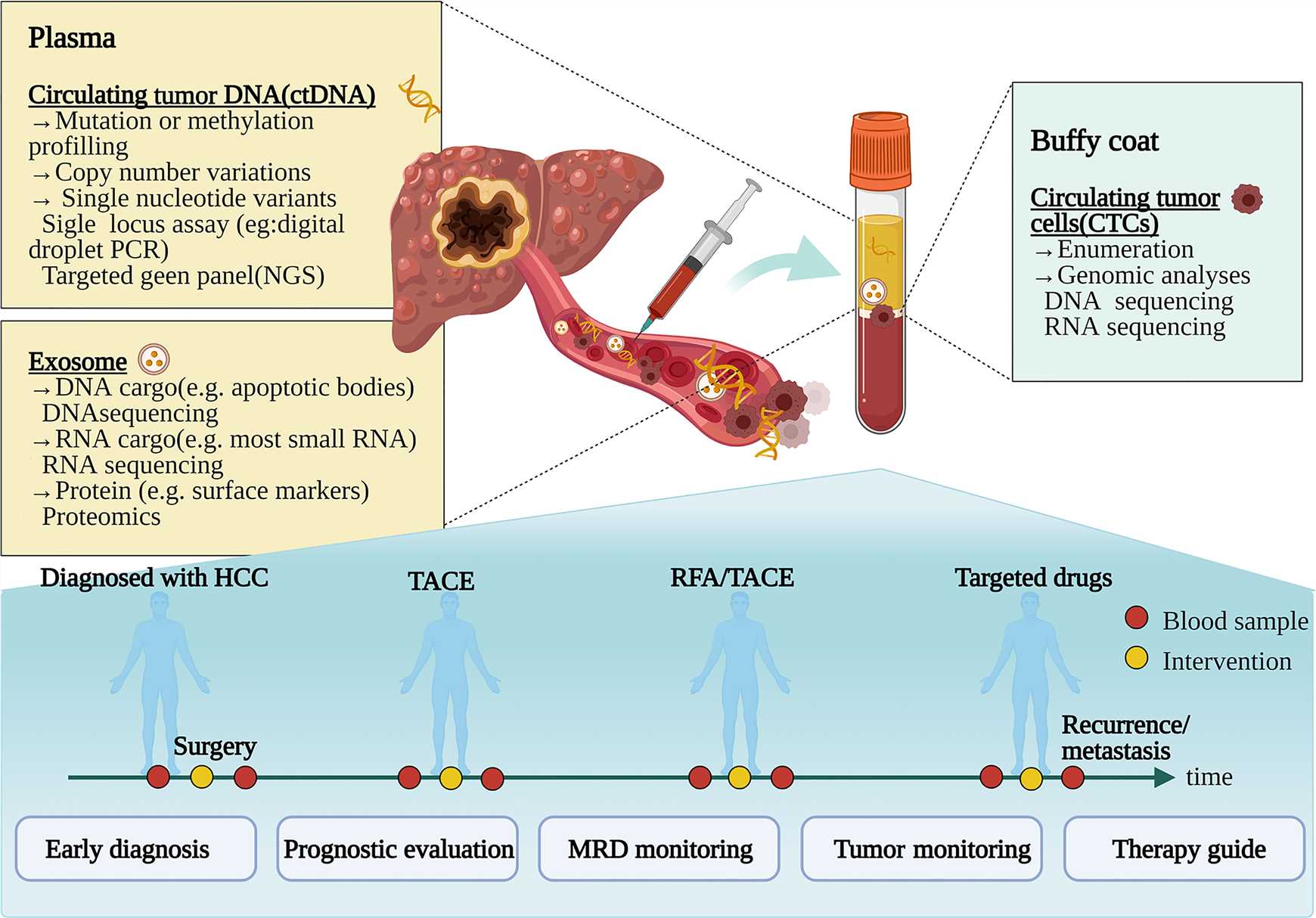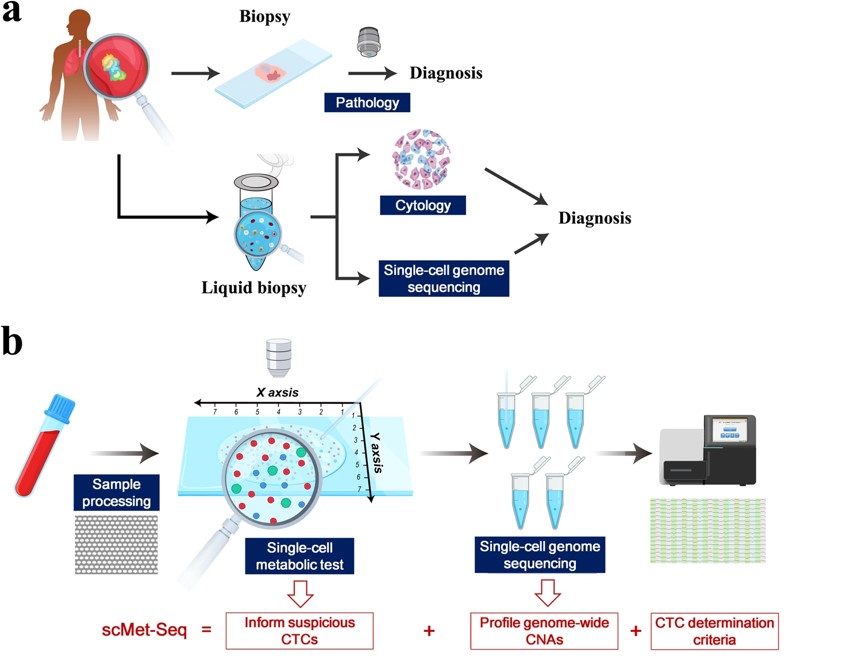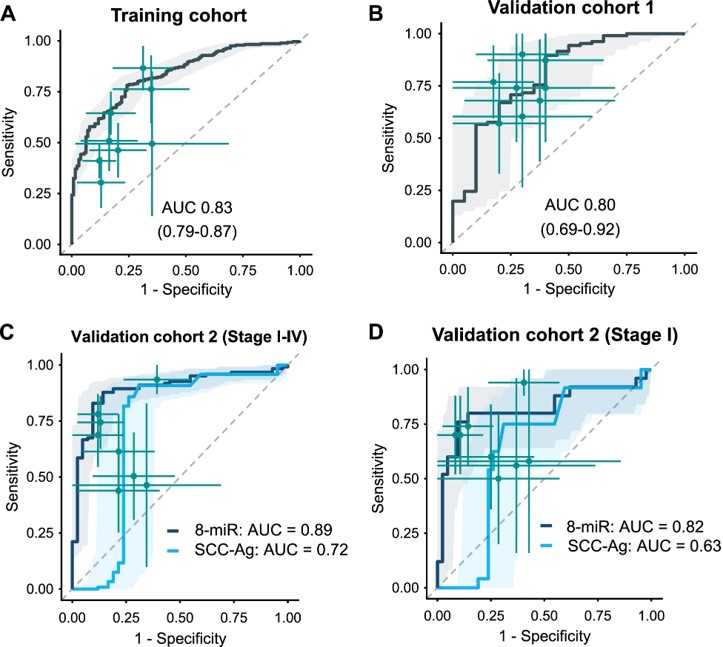Liquid biopsy has increasingly been considered for early tumor diagnosis, therapeutic guidance, and recurrence monitoring due to the abundant information that it can provide about tumors. As a global-leading biotechnology company, Creative Biolabs has longtime been pursuing the frontier of science and has laid a solid foundation. We are confident in providing our clients with high-quality liquid biopsy-related services.
Overview of Liquid Biopsy
Liquid biopsy is a minimally invasive tool to detect molecular biomarkers in body fluids, such as peripheral blood, urine, saliva, cerebral spinal fluid, and breast milk. This tool provides a window for a real-time follow-up of tumor dynamics in an individual cancer patient. Although obtaining a tissue biopsy (the gold standard method), remains the mainstay of diagnosis, liquid biopsy appears as an appealing alternative to the limiting solid biopsy approaches because of its several advantages: it gives a more representative characterization of the whole tumor genetics and allows sequential sampling for follow-up of tumor progression, response to treatment, metastasis, and disease recurrence.
 Fig.1 Patterns of clinical application for liquid biopsy in hepatocellular carcinoma patients.1, 2
Fig.1 Patterns of clinical application for liquid biopsy in hepatocellular carcinoma patients.1, 2
Technologies and Applications
The peripheral blood of a cancer patient contains the cell products derived from the primary tumor and metastatic sites, such as circulating tumor cells (CTCs), which can reflect genetic alterations in the cancer cells and provide an insight into tumor dynamics. Detection of circulating components has revealed its clinical relevance as a biomarker for diagnosis, recurrence monitoring, identification of therapeutic targets, and resistance mechanisms, prognosis assessment, and a better understanding of the biology of metastatic development. CTCs (in the mononuclear cell fraction of the blood) may provide genomic, transcriptomic, and proteomic information on the tumor.
Circulating tumor DNA (ctDNA) is the password of the tumor in the blood and is closely related to the occurrence and development of the tumor. Cancer is essentially a genetic disease. Although different tumors have different causes, the activation of oncogenes and inactivation of tumor suppressor genes are indispensable in the final analysis. The presence of ctDNA will indicate the presence of a tumor, enabling early diagnosis of the tumor. Tumor heterogeneity is mainly mediated by genetic changes. ctDNA is released into the blood from different pathological tissues, consequently, the analysis of ctDNA can reflect the condition of the tumor and its heterogeneity.
The genetic information from liquid biopsies resides in CTCs, ctDNA, circulating tumor RNA (ctRNA), and exosomes. Cell-free or extracellular RNAs have been detected in many human bodily fluids, including serum/plasma, saliva, cerebrospinal fluid, synovial fluid, tear fluid, amniotic fluid, and urine. For those genes that are expressed, ctRNA contains the same mutational information as does ctDNA, but can also provide information about the quantitative expression levels of genes of interest.
Exosomes are a type of extracellular vesicles (EVs) of endocytic origin ranging in size between 30 and 150 nm. Exosomes carry several molecules including proteins and nucleic acids. They are described as playing an important role in the exchanges of molecular information between cells. They are detectable in the blood of patients with various types of cancers and have been shown to correlate well with tumor progression, immune response suppression, angiogenesis, and metastasis. Exosomes have been considered as mediators of genetic exchange between heterogeneous populations of cancer cells.
- Tumor-Educated Platelets Detection
Multiple blood-based biosources are currently evaluated, including tumor-educated platelets. Platelets, originating as anucleate cells from megakaryocytes, have emerged as central players in the systemic and local responses to tumor growth. A range of cancer biomarkers can be found in tumor-educated platelets (TEPs). Several studies have shown the importance of such biomarkers using different techniques to detect and monitor numerous cancer types. In the past years, methods for isolation and analysis of spliced TEP mRNA were developed to detect cancer with high accuracy. The development of TEPs as potential liquid biopsy biosource is a consequence of many studies on the role of platelets in cancer over the past centuries.
Of all the sources of biomolecular information that can be used to diagnose and characterize cancers through liquid biopsy, protein biomarkers have the longest standing tradition in pre-clinical/clinical practice. These circulating protein biomarkers include CEA, PSA, β-hGC, AFP, FDP, HE4, ALT/AST, LDH, CA 125, CA 15-3, CA 19-9, CA 27-29. Standard protein biomarker assays typically target a single or a small number of prespecified tumor-associated antigens using immune-based methods. These methods have a high analytical sensitivity and assays can easily be automated using liquid handling robots.
Metabolites detection can focus on oncometabolite concentration changes caused by dysregulation in metabolic pathways. For instance, dysregulation of intracellular polyamine metabolism is a hallmark of most cancers and a potential target for therapy. Furthermore, urine and plasma polyamine content in cancer patients can mirror intracellular levels of these metabolites, presenting an opportunity to use them as liquid biopsy biomarkers.
- Nucleosome Detection
It has been shown that nucleosomes are released into plasma following cell death and apoptosis and many are then captured by macrophages. These are carried as predominantly oligonucleosomes or mononucleosomes with circulating cell-free DNA (cfDNA). cfDNA and circulating tumor DNA (ctDNA) comprises a small proportion of total circulating DNA and is an attractive potential biomarker for guiding patient treatment and informing prognosis, and have been extensively examined as a part of a potential liquid biopsy.
Services at Creative Biolabs
Committed to in vitro diagnostic (IVD) research for years, Creative Biolabs has accumulated extensive experience and advanced technologies. With a strong foundation and a team of Ph.D. level experts, we are confident in providing every customer with satisfied liquid biopsy services.
As an important part of IVD, liquid biopsy has attracted many researchers' attention. With advantages in multiple aspects, Creative Biolabs aspires to promote the development of liquid biopsy through our high-quality services. If you are interested in the development of liquid biopsy or you have any other questions about our services, please don't hesitate to contact us for more information.
Published Data
1. Accurate Circulating Tumor Cell Detection for Multi-Cancer Liquid Biopsy Using Single-Cell Low-Pass WGS
 Fig.2 Schematic illustration of scMet-Seq.3
Fig.2 Schematic illustration of scMet-Seq.3
This study introduced a single-cell low-pass whole genome sequencing (scMet-Seq) protocol for sensitive and accurate detection of CTCs, combining a Hexokinase 2 (HK2) marker and a Tn5 transposome-based method with an improved cell fixation strategy. scMet-Seq was tested in blood and non-blood body fluids for diagnosing metastatic diseases, including malignant ascites (MA) and metastatic small-cell lung cancer (SCLC). It demonstrated high diagnostic sensitivity (79% for MA and 90% for metastatic SCLC), with nearly 100% specificity and positive predictive value, outperforming clinical cytology. scMet-Seq offers a liquid biopsy approach for cancer diagnosis across various cancers and body fluids.
2. A microRNA Liquid Biopsy for the Early Diagnosis of Esophageal Squamous Cell Carcinoma
 Fig.3 Training and validation of an 8-miRNA circulating signature.4,2
Fig.3 Training and validation of an 8-miRNA circulating signature.4,2
This study developed a circulating microRNA (miRNA)-based signature for early diagnosis of esophageal squamous cell carcinoma (ESCC) through genome-wide miRNA profiling. Eighteen miRNA candidates were identified from three datasets and validated in ESCC tissues, with 8 miRNAs overexpressed in serum. A serum-based miRNA signature was developed with an AUC of 0.83, confirmed in two independent cohorts (AUC: 0.80 and 0.89), and further validated the diagnostic performance in two prospective cohorts (AUC: 0.92 and 0.93). Importantly, this 8-miRNA signature outperformed clinical serological markers in distinguishing early-stage ESCC from healthy controls (p < 0.001).
References
- Yang, Jin-Cui, et al. "Clinical applications of liquid biopsy in hepatocellular carcinoma." Frontiers in Oncology 12 (2022): 781820.
- Distributed under Open Access license CC BY 4.0, without modification.
- Shen, Xiaohan, et al. "Single-cell low-pass whole genome sequencing accurately detects circulating tumor cells for liquid biopsy-based multi-cancer diagnosis." NPJ Precision Oncology 8.1 (2024): 30. Distributed under Open Access license CC BY 4.0. The image was modified by extracting and using only part of the original image.
- Miyoshi, Jinsei, et al. "A microRNA-based liquid biopsy signature for the early detection of esophageal squamous cell carcinoma: a retrospective, prospective and multicenter study." Molecular cancer 21.1 (2022): 44.
For Research Use Only.

